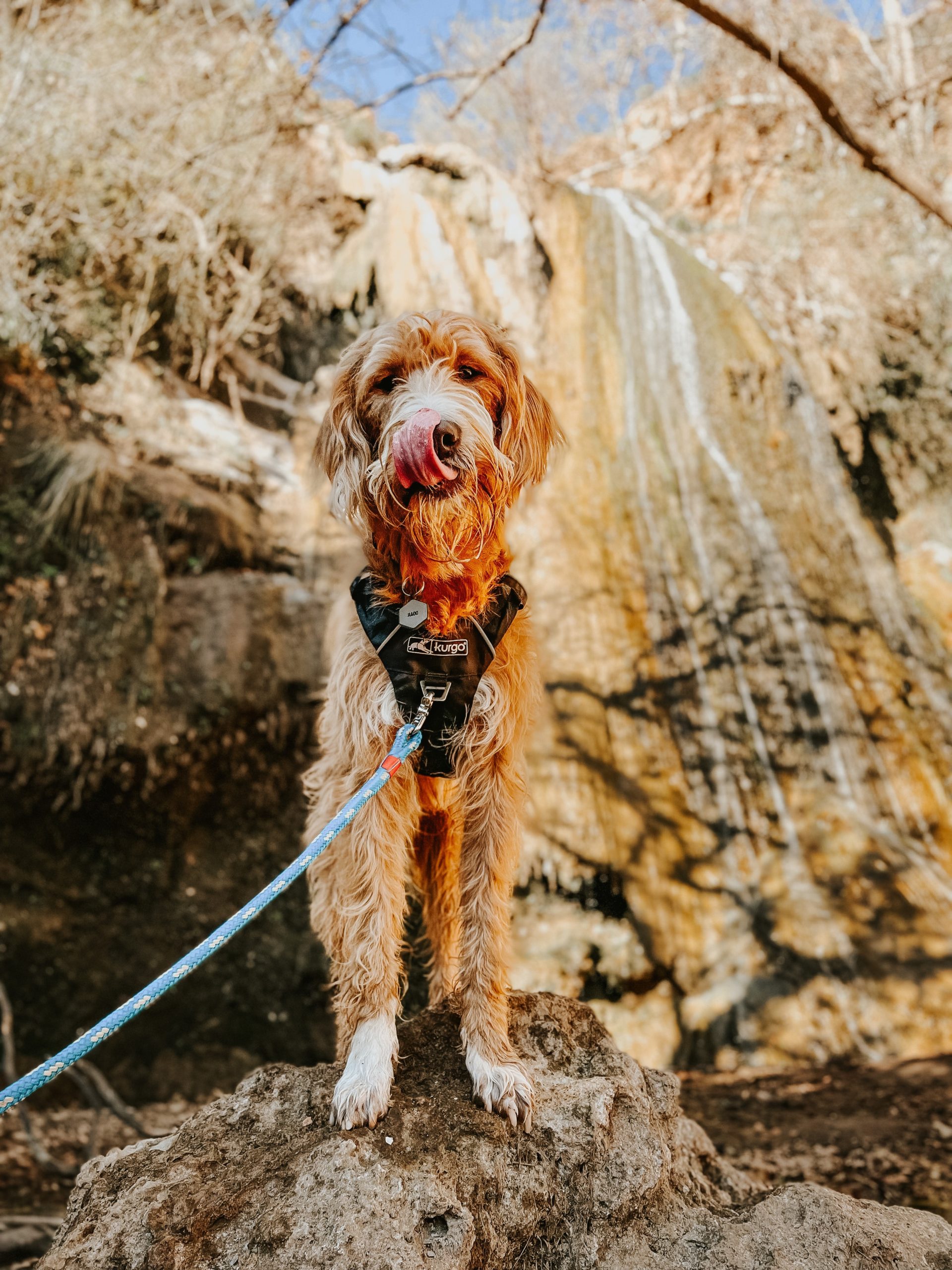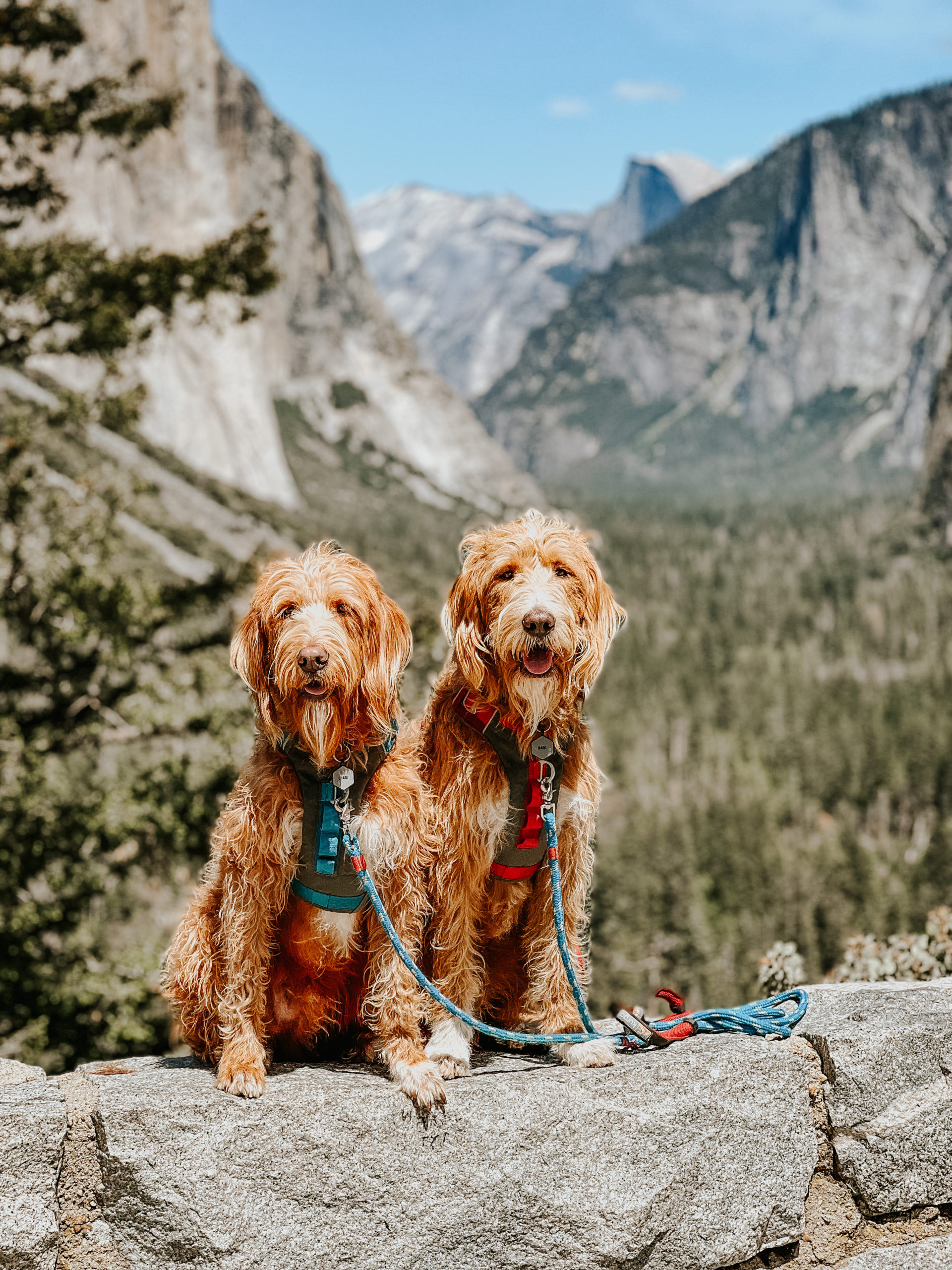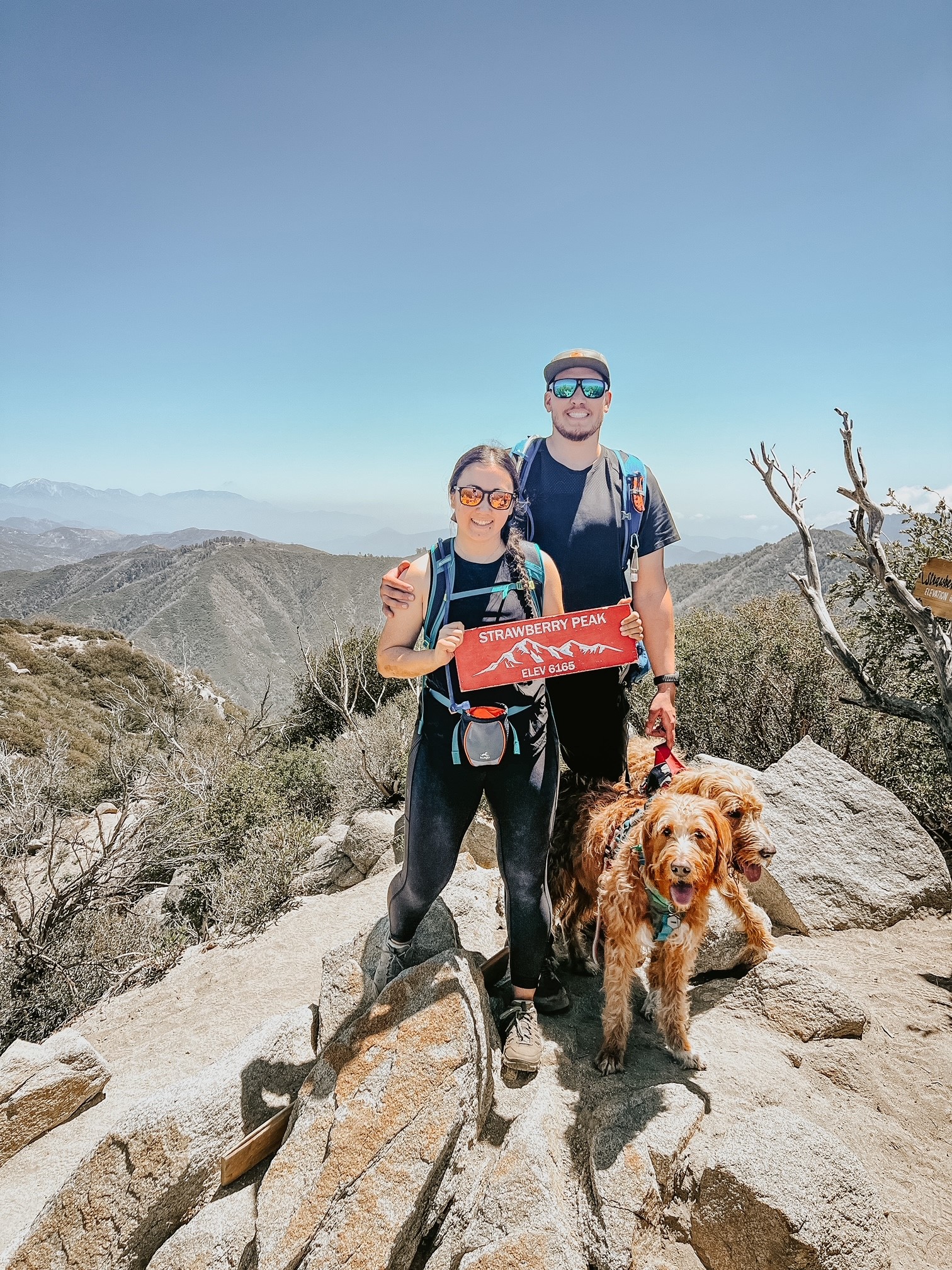Sawmill Mountain via Mount Pinos is a moderate, dog-friendly, 7.5 mile out-and-back trail with approximately 1,550 feet of climbing.

This two-peak hike is popular because it bags Mount Pinos, the highest point in Ventura County, and then Sawmill Mountain, the highest point in Kern County. While there are sections of the trail that can be challenging, it definitely doable for most by going slow and taking breaks, which is easy to do with the views along the way. It’s also one of the summit options on the SoCal Six Pack of Peaks Challenge and is dog-friendly. All of this means you’ll likely run into other people and dogs along the trail.
Ready to go?
Be prepared with the essentials
- Wear sunscreen, sunglasses and a hat. Even though a good chunk of the trail is shaded, you’ll still spend some time in the sun at the peaks; especially if you like to stay to enjoy the view for a while like we do.
- Carry plenty of water. We recommend at least 2L per person, and more if you’re bringing your dog.
- Bring snacks to keep you (and your dog) fueled.
- Don’t forget the first aid kit.
Not sure what to pack? Check out our full list of essentials and shop our favorites.
Getting to the trail and parking
The drive up to the trailhead is beautiful. You’ll park at the Nordic Base parking lot, which is very large and typically has plenty of space available. A Forest Adventure Pass is needed to park here. We displayed our National Parks pass. Sometimes there are porta-potties here, but if not, there are vault toilets available at Chula Vista Campground. When you’re ready to get started, the trailhead is off to the left hand side when you enter the parking lot.
We used the directions to the trailhead on AllTrails (note: we only did a portion of this hike; AllTrails doesn’t seem to have a trail option that only hits Mount Pinos and Sawmill Mountain).
Hiking to Mount Pinos

The trail begins at the parking lot as a wide fire road. At one point we saw a couple of dirt bikes come through, but otherwise it was quiet and there were no other motor vehicles. You’ll follow the main trail past a gate. At the first fork in the trail, turn left. You’ll gradually climb a windy dirt road covered in shade from the pine trees.
When you come out of the pines, continue left along the wide trail up towards the meadow. When you reach the meadow you’ll start to see the Mount Pinos radio towers. There are two ways up to Mount Pinos from the meadow. We took the smaller trail to the right for sweeping views of the mountains on our way up (then took the other way down later). This detour is a little longer than the main road up, but the views are much nicer.
Follow the trail up to Mount Pinos (and the radio towers). Stop here for a quick break, enjoy the views, and take your summit selfie. Mount Pinos is the highest peak in Ventura County at 8,847 feet.
When you’re ready to continue on, follow the trail straight down to the main dirt road and continue straight to the Condor Observation Point (if you turn left, you’ll be headed back to the parking lot).
Condor Observation Point
After a few minutes you’ll walk up to the Condor Observation Point. There are some nice views here, but there are plenty more along the trail too. Continue on to the right of Condor Observation Point to follow Tumamait Trailhead towards Sawmill Mountain.
At the first junction, you can head right to a nice panoramic viewpoint, or you can continue straight along the main trail.
Hiking to Sawmill Mountain
As you head down the main trail, you’ll follow some exposed switchbacks down into the Chumash Wilderness before you’re reunited with some shade.


Eventually you’ll descend into the saddle before heading back uphill towards Sawmill Mountain. Most of the descent and climb is gradual, but there are a couple of sections where you might feel more comfortable having trekking poles.
Eventually you’ll meet another fork (lined with branches and rocks when we were there) that you’ll turn right to follow up to the peak. Follow this trail up. Soon in the distance you’ll see the the massive stone marker– you’ve made it! Sawmill Mountain is the highest peak in Kern County at 8,822 feet.

Enjoy the views and then head back down the way you came. Remember you can skip Mount Pinos and continue down the main dirt road back to the parking lot.
Happy Hiking!































